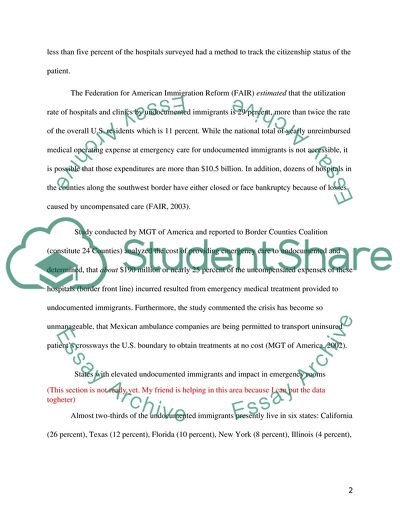The Financial Impact of Undocumented Immigrants in Emergency Rooms Literature review Example | Topics and Well Written Essays - 2000 words. https://studentshare.org/literature/1737339-the-financial-impact-of-undocumented-immigrants-in-emergency-rooms
The Financial Impact of Undocumented Immigrants in Emergency Rooms Literature Review Example | Topics and Well Written Essays - 2000 Words. https://studentshare.org/literature/1737339-the-financial-impact-of-undocumented-immigrants-in-emergency-rooms.


